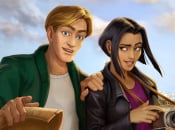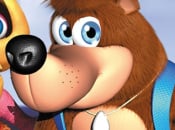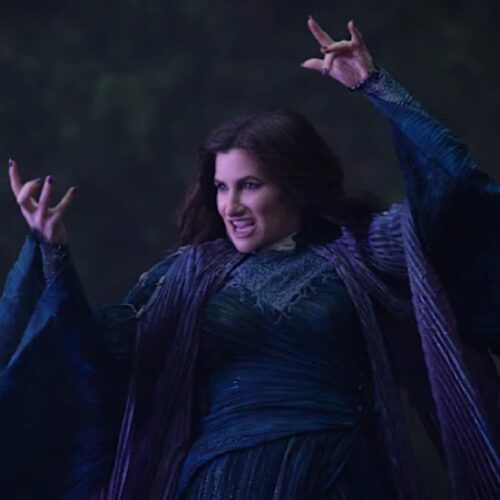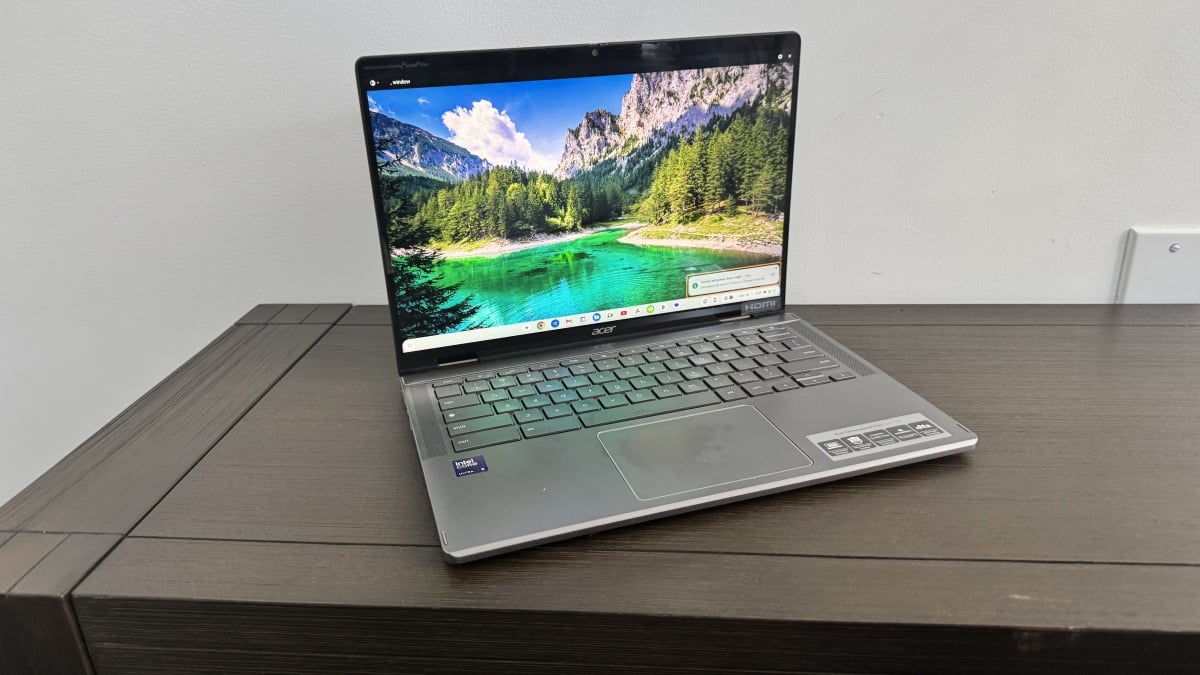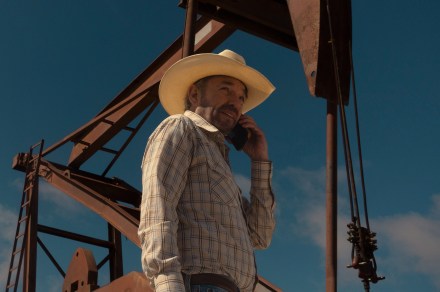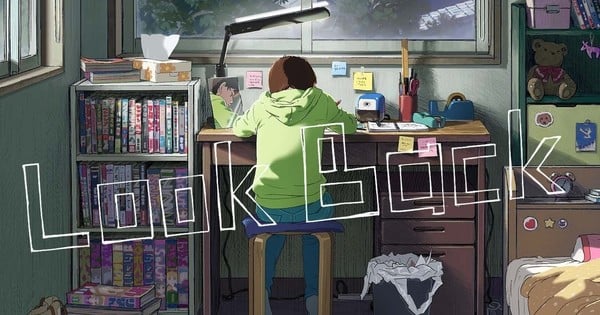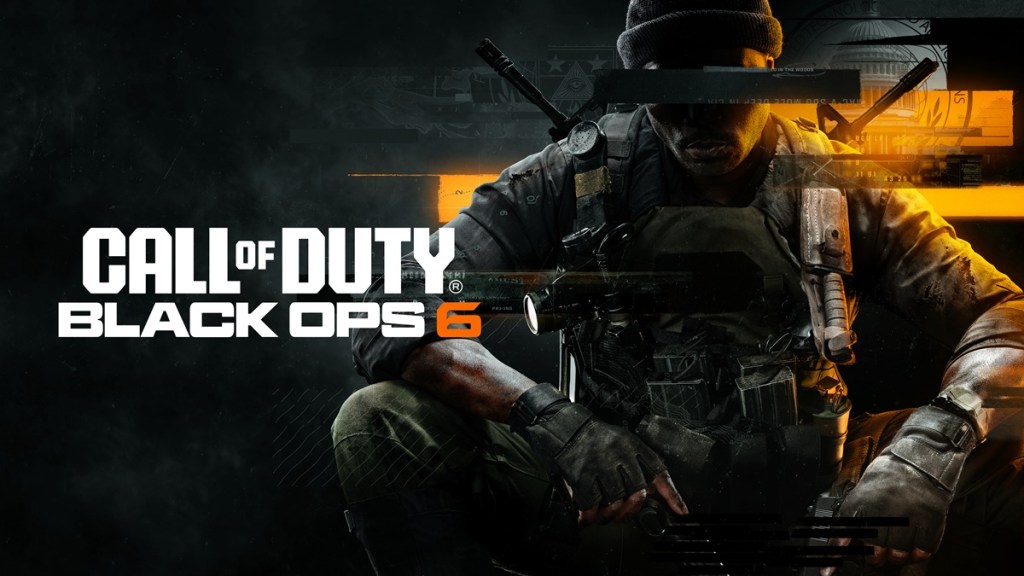
Broken Sword – Shadow of the Templars is a big deal in the world of graphic adventures. Ever since its release on PC in 1996, it has jostled for the top spot on best-ever lists around the internet. It’s landed on consoles and early mobile platforms, including a Director’s Cut that reached Wii and DS. Now, nearly three decades down the line, it’s been ‘Reforged‘. But does the old game underneath it all still hold up, or is this a cheap nostalgia trip?
To set the scene for anyone new to Broken Sword – or to jog the fading memories of those who played it back in the ’90s – the story is about George Stobbart, an American tourist in Paris. Relaxing outside a cafe and flirting with the waitress, his sunny morning is soon blown to pieces by a clown with an explosive accordion. George can’t resist poking his nose in – especially after meeting the cynical but charming Nico, a French investigative journalist following the case. The game then rattles through an extensive cast of characters across Europe and the Middle East, unfolding a mystery entangled with the history of the medieval order of the Knights Templar.

Broken Sword – Shadow of the Templars: Reforged is a remaster of the original game – not of the Director’s Cut. It therefore leaves out some extra material added for the latter. However, some of that material arguably felt tacked on, and it was influenced by the vogue for touchscreen gaming in ways that now feel less immersive than we all thought at the time. Going back to the game’s roots was probably a good call.
So what’s the nature of this ‘reforging’? There’s a total overhaul of all the backgrounds, first of all. These were originally hand-drawn in pencil and then digitised into the 1996 pixel art. They were gorgeous at the time (and remain artistically impressive) but those Super VGA graphics don’t pack the punch they once did. The newly redrawn art is absolutely faithful to the original spirit – even keeping an optional 16:10 ratio – while colourfully filling the Switch’s high-definition canvas. Characters and animations have also been recreated in HD, sitting comfortably in the new, slick world. A click of the right control stick flicks instantly between new graphics and old.

Moving on from the in-game graphics, the full-screen animated cutscenes have also been modernised. Perhaps they don’t quite match the finesse of the new in-game art, but they’re close enough to keep the magic going. The cutscenes remain engrossing and cinematic, from the opening sweep across Paris to the dramatic discoveries and revelations of the later plot.
Finally then, the audio. Here, things get a bit shaky. The music is gorgeous, sounding as smooth as the visuals look and dropping in cues and stings in response to your actions as you play. However, the voices are a different story. The voice acting of the original was always highly praised, and every facet of that has been preserved – which is to say it hasn’t been changed in any way we could notice. It’s the same audio, at the same, flat, crackly quality. All the voices sound like they’re being phoned in, even if the performances aren’t.

For the first half-hour or so, this clash of beautifully updated graphics and lo-fi speech sounds was incredibly grating, but we eventually grew accustomed to it. It would obviously be a formidable undertaking to re-record the reams and reams of dialogue, so it’s perhaps just a shortcoming developer Revolution had to make do with.
So with all the spit and polish sprucing things up, can Shadow of the Templars hold up as a game after nearly three decades? Yes and no. Let’s start positive: the writing is excellent. It’s hard for a graphic adventure to take itself too seriously when it will usually have some absurd things going on (massive inventory items in tight jeans pockets, characters with infinite patience for your repetition as well as their own…). Another classic that heads that challenge off is of course Monkey Island. There, the absurdity of the game mechanics is met by the absurdity of the humour – to great effect.

But Broken Sword wants to tell a story with a straighter face. It does so by injecting its humour far more subtly. There are some true gags in there, though: “I’m innocent; I’m an American.” / “Can’t make your mind up, eh?” Or “I’m acting in the interests of Truth and Justice.” / “Thank god! I thought you were the police!” There’s just enough silliness to smooth over the oddities of point-and-click adventures, but not so much that the story can’t feel a bit grown-up.
The pacing of the story is also very well-judged. The game is mostly linear, with a steady flow of new scenery, new characters, and new twists in the plot. You’re on the Paris streets, in a hotel, a hospital, jetting off to Ireland, Spain… It keeps the energy up for all of its 10 hours or so.
Gameplay relies heavily on the writing, too. Much of the puzzle-solving amounts to exploring and exhausting dialogue options. This risks being a bit tiresome because new events, conversations, and items often open up new dialogue options, meaning you need to go back ’round the houses, checking in on everyone again. The quality of the writing just about carries you through. Non-dialogue puzzles are relatively few, and while some of them may get your goat (*wink*), they mostly go down very smoothly. A subtle hint system with a timer will keep you off the internet without spoiling the fun. Interaction itself is handled by moving a cursor with the left stick and pressing ‘A’ or ‘Y’. Touchscreen is also supported, although we stuck to the cursor. (We tried a mouse, too, but no such luck.)

So what doesn’t hold up? Well, 28 years is a long time, and attitudes and expectations evolve. While energetic and well-performed, the voices include some accents to make you wince. The game leans on some outdated exoticism, where new countries are painted in broad strokes of mysticism. A memorable (and cringeworthy) example is a Syrian taxi driver describing his toilet habits with the phrase, “Ultar use bucket.” It’s a cartoonish rendition even for 1996 and you’ll need a pair of Indiana Jones-tinted glasses firmly on your nose for that section. At least the game does seem to know it’s leaning into these old tropes.
Conclusion
Despite the exoticism, 1996 PC voice sample quality, and linear, dialogue-heavy interactions, this reforging of an old point-and-click classic does a great job. It looks fabulous, and everything that gave the original its appeal is intact. It hardly needs proving these days, but Shadow of the Templars: Reforged shows once again that nostalgia never gets old.
